The thing is, most dating platforms don’t just fail to be transparent — they actively obscure how they match people. Their matchmaking algorithms are like secret recipes from a paranoid grandmother. As a result, users are often unaware whether their match pool is defined properly or just a chaotic soup of random strangers and thirst traps.
Here are three case studies that explain the mess, drawn from behavioural insights and structural issues outlined in recent research.
Case Study 1: Swipe Fatigue and the Illusion of Choice in Love
Subject: Rohit, 29, Mumbai
Status: 5 dating apps, 3000 swipes, 0 coffee dates
Rohit’s dating life is a full-time job — minus the pay, benefits, or HR department to report harassment to. Despite swiping right, his matches are rare, and conversations die faster than houseplants in a bachelor pad.
What’s happening?
Rohit is caught in the “shopping mall model” of dating apps, where users are presented with a seemingly endless scroll of options, none of which are meaningfully curated. User engagement metrics drive this undefined match pool more than meaningful compatibility.
Apps purposely avoid defining pools based on mutual interest, location relevance, or actual social signals, because random chaos means more screen time.
The result? Rohit thinks he has infinite options, but really, he’s just spinning the matchmaking roulette wheel. And the house always wins.
Case Study 2: The Love Algorithm is Ghosting You
Subject: Priya, 33, Delhi
Status: Premium subscriber, confused and low-key betrayed
Priya finally gave in and bought the “Platinum Super Gold Deluxe” plan on a popular app. They promised her “priority visibility,” “access to serious singles,” and a so-called “compatibility index” that sounded suspiciously like Hogwarts sorting.
But weeks later, she still sees random profiles — ages, interests, and locations all over the place.
What’s happening?
This is classic algorithmic opacity. Most Web2 dating apps treat their algorithms as sacred black boxes. The reason? If users understood how the system actually worked (e.g., prioritizing people who swipe more, who spend more, or who fit advertiser-friendly profiles), they’d realize it’s less matchmaking and more engagement farming.
Priya’s match pool isn’t curated — it’s tuned for maximum scroll time, not compatibility. Worse, her money didn’t buy love — it bought deeper confusion in a well-lit UX.
Case Study 3: You’re Not Even in the Right Love Pool
Subject: Amit & Zoya, 38 & 35, Bangalore
Status: Divorced, looking for long-term relationships — stuck in hook-up hell
Amit and Zoya value education, show emotional intelligence, and actively seek commitment (rare, we know). They sign up for a dating app, thinking the filters will help.
Instead, Amit gets bombarded with casual DTF profiles. Non-serious chats and endless small talk flood Zoya. Both are wondering: “Did I tick the wrong box somewhere?”
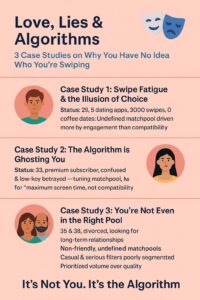
Love, Lies & Algorithms
What’s happening?
They’re victims of a non-friendly, undefined match pool, where the platform doesn’t segment users effectively. Despite having the data (age, intentions, location, etc.), the app still prioritizes volume over quality. Everyone’s thrown into the same bucket, regardless of whether they’re looking for marriage, fun, or just someone to validate their haircut.
The reason is simple: curating pools based on intention reduces engagement. Randomized pools = more time spent = more ads sold or upsells triggered.
So, Amit and Zoya? They’re not misaligned. The app’s algorithm is.
Final Swipe: It’s Not You. It’s the Algorithm.
Web2 dating apps aren’t failing because people are bad at love — they’re failing because they’re opaque, profit-driven, and afraid of transparency.
Instead of telling users:
- How their match pool is created?
- who they’re being shown to (or hidden from),
- Or what behavioural cues matter…
…they keep the doors locked and the metrics secret. Why? Because if you saw how they make the sausage, you’d probably stop swiping and demand something better. But the app, having all these features, is live. Try DropD.
Until then, most people will keep dating in the dark, left wondering why love feels more like playing Minesweeper with your heart.

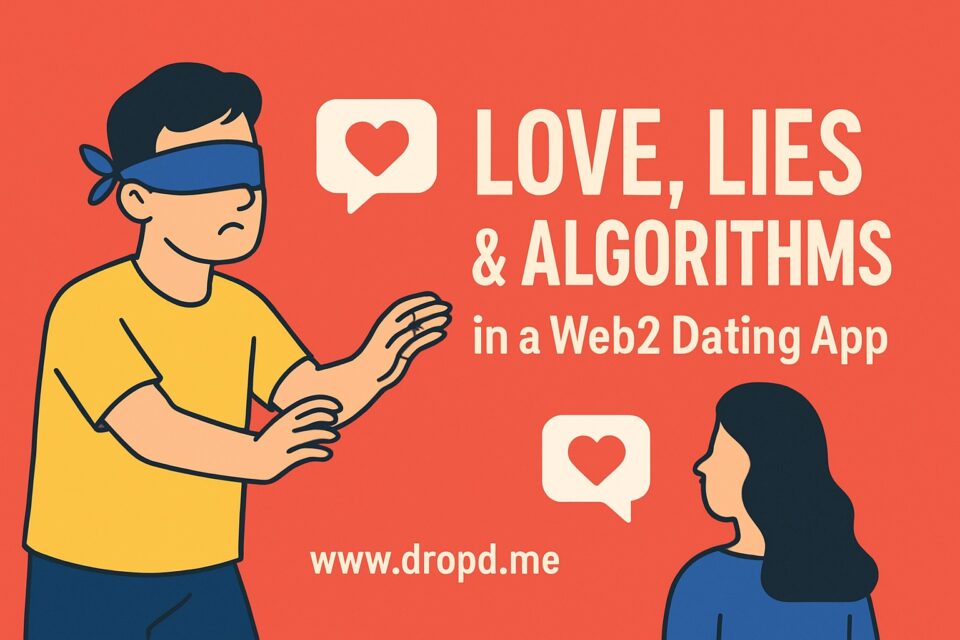
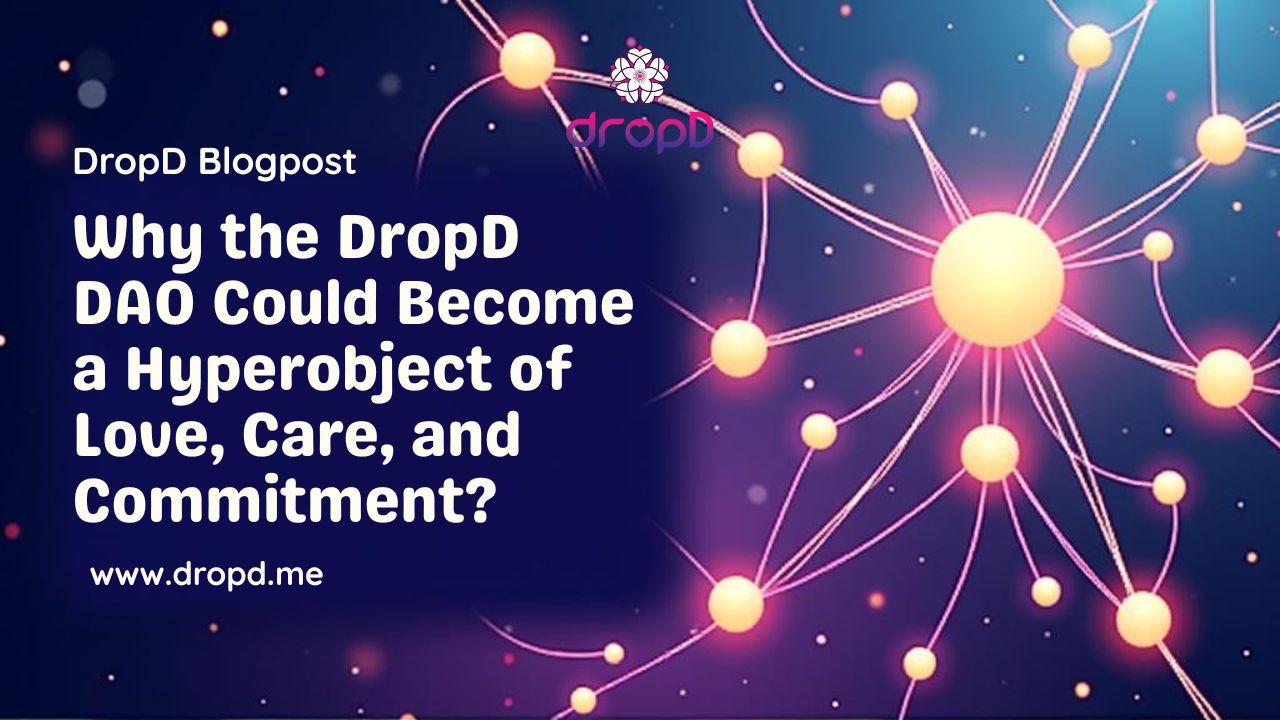
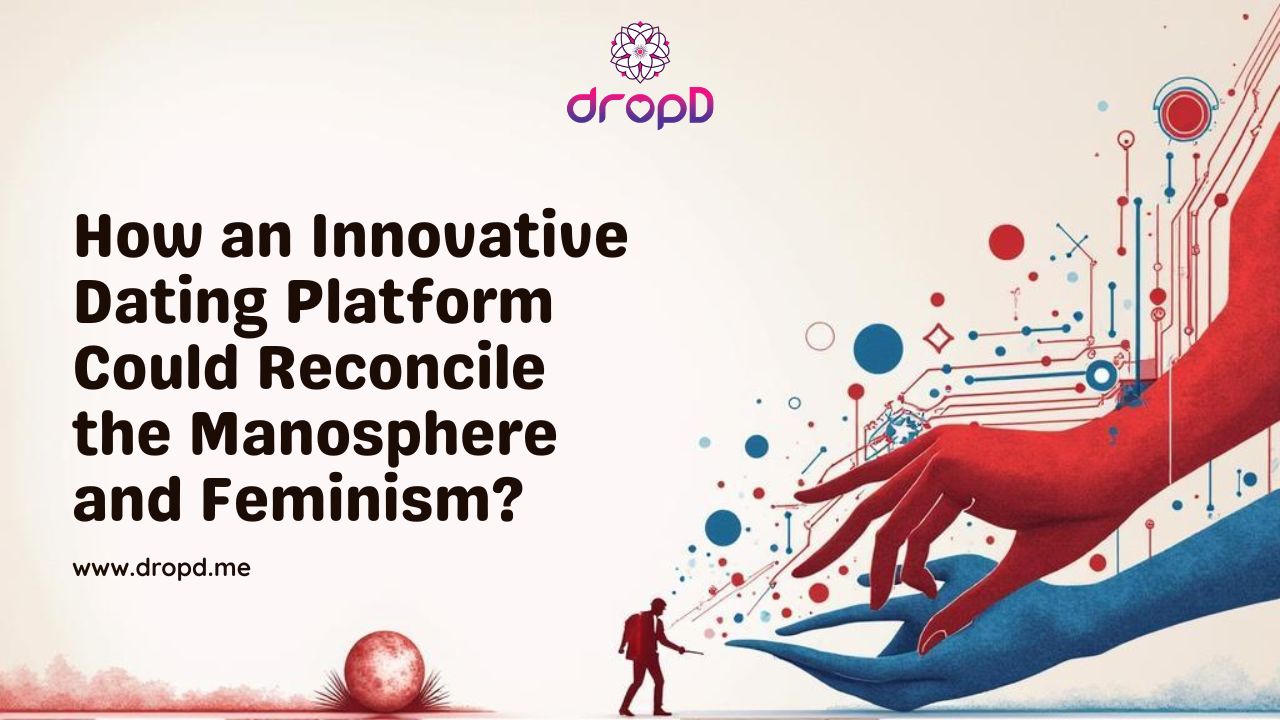
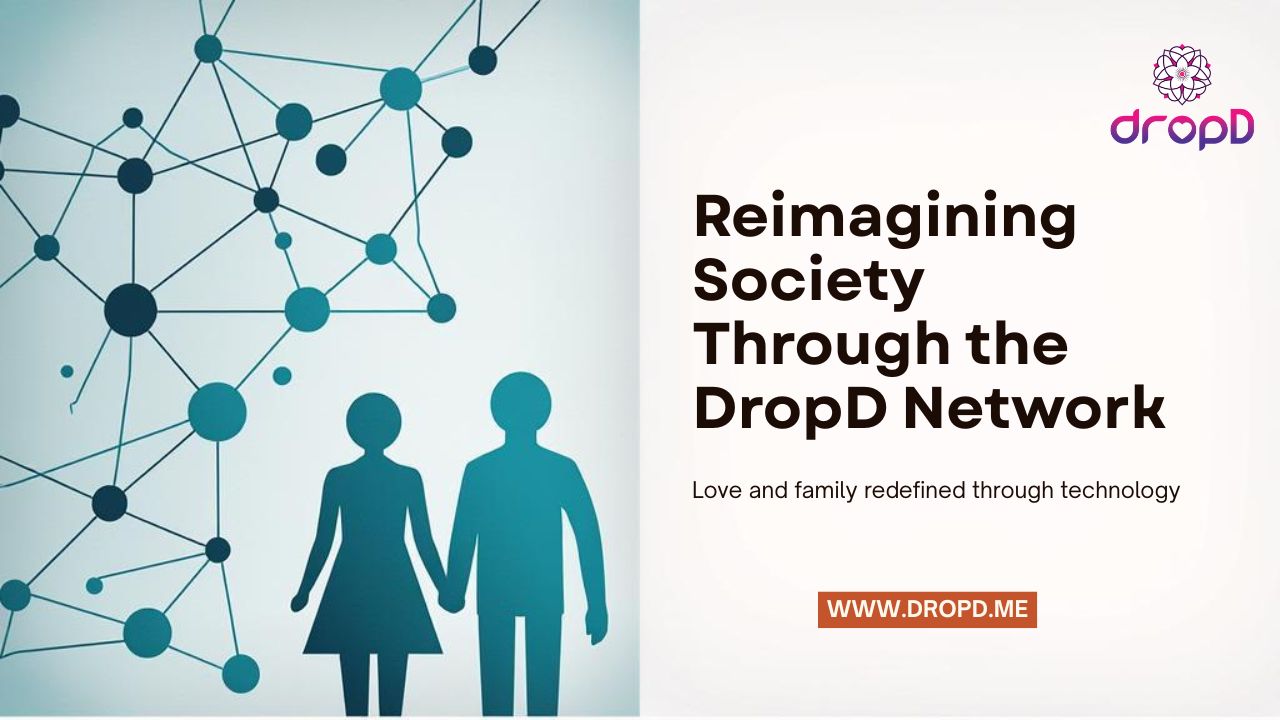
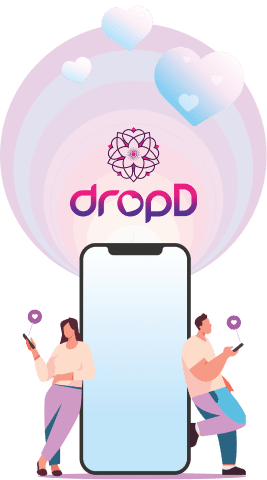
Leave A Comment